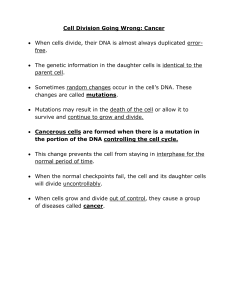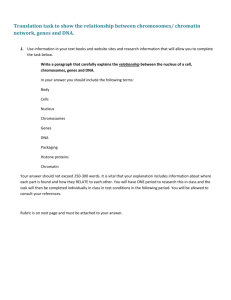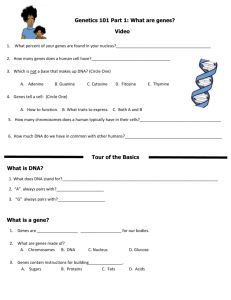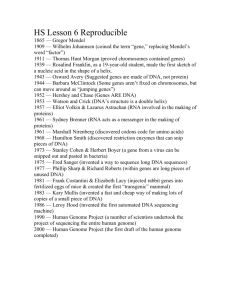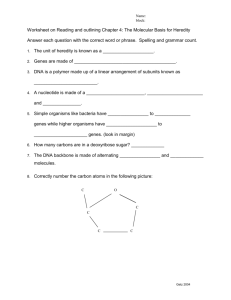Cells Behaviour Normal cell Cancerous cell Growing uncontrollably
advertisement
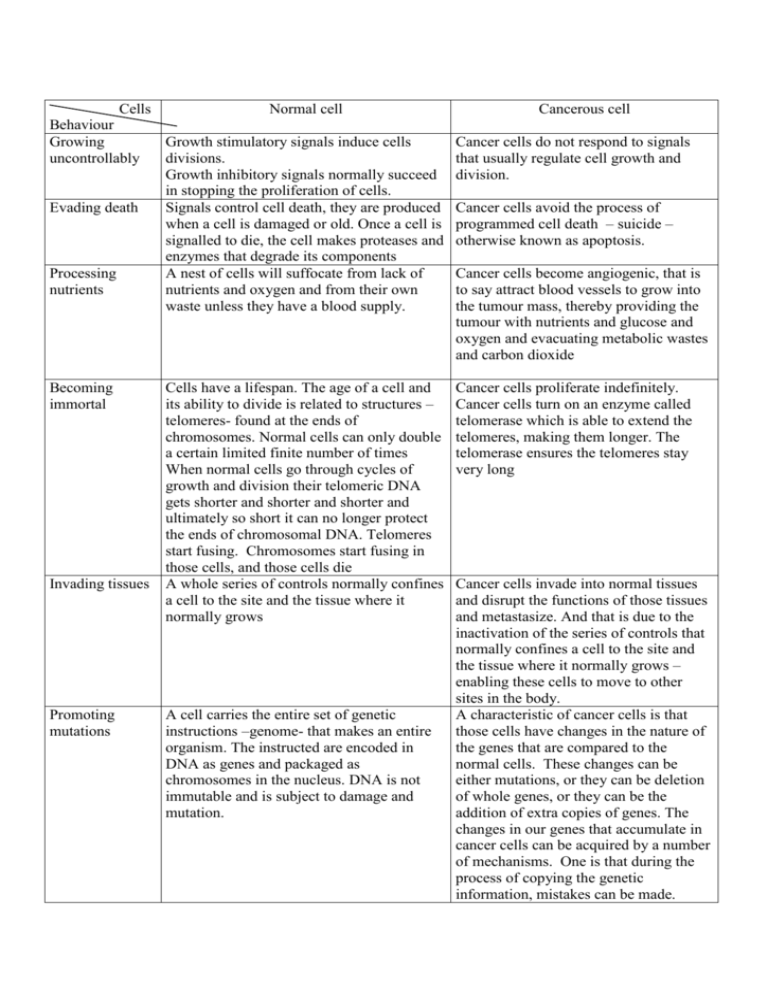
Cells Normal cell Behaviour Growing Growth stimulatory signals induce cells uncontrollably divisions. Growth inhibitory signals normally succeed in stopping the proliferation of cells. Evading death Signals control cell death, they are produced when a cell is damaged or old. Once a cell is signalled to die, the cell makes proteases and enzymes that degrade its components Processing A nest of cells will suffocate from lack of nutrients nutrients and oxygen and from their own waste unless they have a blood supply. Becoming immortal Invading tissues Promoting mutations Cells have a lifespan. The age of a cell and its ability to divide is related to structures – telomeres- found at the ends of chromosomes. Normal cells can only double a certain limited finite number of times When normal cells go through cycles of growth and division their telomeric DNA gets shorter and shorter and shorter and ultimately so short it can no longer protect the ends of chromosomal DNA. Telomeres start fusing. Chromosomes start fusing in those cells, and those cells die A whole series of controls normally confines a cell to the site and the tissue where it normally grows A cell carries the entire set of genetic instructions –genome- that makes an entire organism. The instructed are encoded in DNA as genes and packaged as chromosomes in the nucleus. DNA is not immutable and is subject to damage and mutation. Cancerous cell Cancer cells do not respond to signals that usually regulate cell growth and division. Cancer cells avoid the process of programmed cell death – suicide – otherwise known as apoptosis. Cancer cells become angiogenic, that is to say attract blood vessels to grow into the tumour mass, thereby providing the tumour with nutrients and glucose and oxygen and evacuating metabolic wastes and carbon dioxide Cancer cells proliferate indefinitely. Cancer cells turn on an enzyme called telomerase which is able to extend the telomeres, making them longer. The telomerase ensures the telomeres stay very long Cancer cells invade into normal tissues and disrupt the functions of those tissues and metastasize. And that is due to the inactivation of the series of controls that normally confines a cell to the site and the tissue where it normally grows – enabling these cells to move to other sites in the body. A characteristic of cancer cells is that those cells have changes in the nature of the genes that are compared to the normal cells. These changes can be either mutations, or they can be deletion of whole genes, or they can be the addition of extra copies of genes. The changes in our genes that accumulate in cancer cells can be acquired by a number of mechanisms. One is that during the process of copying the genetic information, mistakes can be made.


